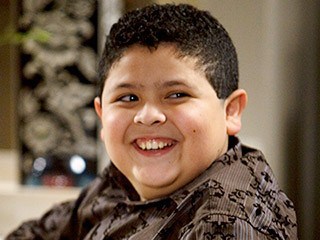Imagine this scene: A teen who is about to enter college goes for a run or heads off for a game of soccer. But Mom and Dad complain about it, and the more physically active the teen is, the more the parents push back against it.
“This scenario is a variation on an often-heard complaint among students in Mexico,” said Angela Wiley, co-author of a new University of Illinois survey of Mexican college applicants that offers a possible explanation for these attitudes and experiences as being rooted in cultural beliefs and expectations.
“In Mexico, where there are very high rates of obesity and diabetes, we’d expect parents to encourage their teens to be active, but this study tells us the opposite is often true, at least for college-bound students,” she added.
Wiley said that the problem of obesity is more complicated than it seems, and sometimes cultural values and attitudes play a role in its development. She suspects that parents of college-bound teens may think the time their teens spend exercising could be better spent studying.
“Or parents may believe their teen’s physical activity, which often takes place in a social context, takes away from family time,” she said.
She admitted that more research is needed to uncover Mexican parents’ values and beliefs about this issue. “However, any research that helps us understand Latino attitudes about physical activity is valuable not only in Mexico but in the United States, where obesity rates are climbing among Mexican immigrants,” she added.
Wiley had the opportunity to survey college applicants about their health and fitness when she visited the Autonomous University of San Luis Potosί in Mexico as part of the U of I College of Agricultural, Consumer and Environmental Sciences (ACES) Academy of Global Engagement.
Upon returning to Illinois, she recruited three additional faculty members — Marcela Raffaelli, Flavia Andrade, and Margerita Teran-Garcia — and a host of students to join the project, along with Mexican colleagues, forming the Up Amigos collaboration. (Up Amigos is an acronym for the University of San Luis Potosί and Illinois: A Multidisciplinary Investigation on Genetics, Obesity, and the Social Environment.)
The researchers were given access to data from the applicants’ physical exams and were asked to formulate questions for the surveys that aspiring students complete. They hope to establish a data set that can be used to learn more about obesity, diabetes, and healthy family functioning in Mexican students and their families. But she also wants to understand more about how Latino culture and attitudes affect young people’s health and fitness.
Each year since 2008, Up Amigos has received new data, and Wiley took the lead in publishing some initial findings in the Journal of Adolescent Health.
In the study, 3,908 16- to 25-year-old applicants to the University of San Luis Potosί answered questions about their own physical activity, their parents’ perceived physical activity, and their family’s influence on exercise and fitness. Because students in Mexico usually live at home while attending college, family influence may be a bigger factor that it would be in other countries.
Of the students in this pilot study, 61 percent reported that they were physically active, although only about 40 percent reported having physically active parents.
“If the teens believed their parents were active, they too were likely to enjoy and participate in various forms of exercise. The surprise was that we expected to find parents supporting their sons’ and daughters’ physical activity. Instead physically active applicants reported more conflict about exercise at home,” she said.
Wiley said that a significant number of teens reapply to the university in successive years, giving the researchers the basis for a longitudinal study. “In these cases, we’ll be able to monitor the progress of the same person over time. We’ll be able to see if teens who report being physically active at the time of their first application have better health outcomes as time goes by,” she said.
Co-authors are Tracy L. Flood, now a resident in pediatrics at the University of Wisconsin Hospital and Clinic; Flavia Cristina Drumond Andrade of the U of I Department of Kinesiology and Community Health; Celia Aradillas and Eduardo Medina Cerda of Autonomous University of San Luis Potosi, Mexico; and the Up Amigos writing group. Funding was provided by the Autonomous University of San Luis Potosi, Mexico; U of I Research Board; U of I Center on Health, Aging, and Disability; and USDA.


